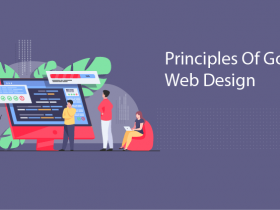
The digital industry is vast and changing continuously. Buying behavior has drastically changed over the past decade, it’s a great time to look ahead at where we are going and the digital marketing trends we are likely to see more of in 2021. Quite possible that you are not aware of new digital marketing trends, but your target audience and competitors are not. Technology continues to advance at a rapid pace, that’s why we created the list of top 10 digital marketing trends in 2020.

World Class Customer Experience
Customer experience has become the new buzzword for companies across industries. People’s beliefs change about what digital marketing actually is. It’s not about trying to convince people to buy your products. The priority has moved towards providing tremendous customer experiences that will keep people coming back for more products.
The growth of online content has given consumers more power. They’re not waiting for you to tell you how great and useful your products are. So you have to offer them something more than information. Coordinate your digital marketing team with your sales and customer service teams to deliver quality throughout their experience.
What truly makes for a good experience? Speed, Convenience, Consistency, Efficiency, knowledgeable and friendly service, and easy payment options are what people value most in their customer experience. People are increasingly loyal to retailers, products, brands, and devices that consistently provide exceptional value with minimum friction or stress.
In short words, you need to consider Customer Experience in every aspect of your marketing strategy because every year is the year of the customer. So, give customers a great experience and they’ll buy more, be more loyal, and share their experience with friends.
Personalization
Give customers a great experience and they will buy more, be more loyal. That’s what every company strives for. So why are so many consumers disappointed? Call it a personalization disconnect: companies tout the latest technology or snappy design, but they haven’t focused on—or invested in—the aspects of personalization that are the most meaningful.
When customers have multiple relatively equal products in front of them, and they need to decide which one they’ll buy, their money’s on the brand that won their hearts. Your customers have demands. They aren’t what you think. One of the ways to engage your customers’ hearts as well as their heads is to personalize marketing to meet their needs.
Reduce friction for consumers and empower employees to bring higher customer satisfaction, resulting in more forgiveness if things go wrong. This may require new ways of working, more focus on personalization, and a sophisticated view of the human and machine relationship in customer experiences.
Visualization
As more people use digital assistants like Alexa or Siri, SEO leans further towards voice searches, with keywords based on how people talk you’d be forgiven for thinking that “readable” content is more important than visuals and design these days.
People prefer visual content as compare to plain text. Because visuals are easier to remember than written content. Companies like Google, Pinterest are also investing in visual search technology. Adding infographics, images, and videos to your text not only makes it more interesting and attractive, but it is the best way to deliver your message.
Shoppable Posts
A native integration that makes it easy to tag and shop products directly from your social media posts or ads. You don’t need to leave the site or app. These shoppable social media posts aren’t exactly new per se, but since Instagram Checkout launched in 2019, they’re rapidly getting more and more attention.
It makes sense because at least 54% of people use social media to research product purchases. Your main goal is to reduce steps for your customers, so directly selling on social media reduces the chances of sales rejections. As long as you sell products, even just a few pieces of branding merchandise, you can see greater returns by allowing transactions through social media posts and ads.
Direct messaging
Direct messaging is becoming one of the hottest digital marketing trends of 2020. Brands are building stronger connections with their customers through messaging apps like WhatsApp, Viber, and Facebook Messenger, or through private messages on social media like Twitter or Instagram. These apps offer the ease of text with the instant of a phone conversation, all in an environment the user is already familiar with from talking with friends.
This technique works best when you encourage users to message you by providing your handle or username. The big clause here is the customer agreeing to it—a customer DMing you first is worlds apart from you DMing them first.
Micro-Influencers
Influencer marketing has been a digital marketing trend for a few years now. When one thinks of social media influencers, who comes to mind? Is it a group of the most highly-followed social media stars with millions of followers or is it someone more approachable and relatable, with a smaller, yet immensely dedicated following? If it’s the latter, they are likely micro-influencers.
It’s been so successful, though, that big-time influencers are now calling the shots, send them a free sample in hopes they’ll review it—there are payment tables and pricing lists. Social media “influence” is now a commodity and an expensive one at that. Because micro-influencers have specific niche audiences and are deeply connected to them.
Talking to Generation Z on their own terms
Last but not least, marketers in 2020 are welcoming the latest Generation Z consumer. Generation Z consists of people who were born from 1995 to 2010. These young people have grown up in a digital world and have very different viewpoints than generations that came before them. They’re also more diverse than any other generation in history and they have a great sense of humor.
Some sources claim that Generation Z will make up 40% of all consumers in 2020. Generation Z concerns about privacy rank highly, so respecting their data will earn you more than using it against them.
Featured Snippets in Google Search
Search Engine Optimization will continue to be an important feature of digital marketing as we move into 2021, but we’re now seeing one of the most major shifts in the SEO industry in the last decade.
With the advancement of mobile and voice search, people are changing the way they use search engines like Google. Even you’ve noticed that your own search and browsing behavior has changed in the last few years due to the fact that you’re looking for the fastest information when you’re on the move and due to Google changes.
Interactive emails and programmatic Advertising
Now email-marketing utilizes emails that look and function like web pages—including clickable buttons and other interactions. Web page-based email templates are not enough; you have to go the extra mile with stunning visuals and UX-centric designs. Make sure your emails are as engaging and beautiful as possible.
Growth in Emerging Markets
Marketing becomes a challenge when it comes to creating content for audiences where cultures, languages, social norms, and online behaviors are different. Especially companies that want to expand their marketing efforts beyond Asia will have to think carefully about how best to reach their consumers. Small businesses can market globally too. The key to success is embracing diversity from the inside.



